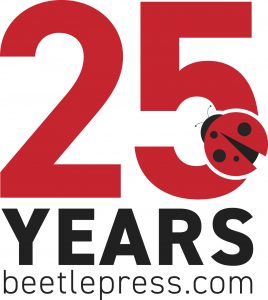Northampton Resident Receives Highest Honor for Work with the National Transportation Safety Board

Award to be received in Washington, D.C., on April 26
NORTHAMPTON—Resident Deb “Debin” Bruce, who has worked for the National Transportation Safety Board since 1996, received the organization’s highest award during a ceremony on Thursday, April 26 in the NTSB board room at L’Enfant Plaza in Washington, D.C.
The Chairman’s Award, an annual achievement presented to an NTSB staff member, is a career award recognizing Bruce’s more than two decades of service in transportation safety, during which she has investigated and made recommendations on high-profile aviation, marine and highway crashes.
Career highlights have included investigating a fatal Tesla crash in Florida in May 2016; exploring the shortcomings of vehicle automation and offering safety enhancements.
“I’m very proud of joining the other noteworthy people in history who have earned the Chairman’s Award by leaving their mark on transportation safety,” Bruce said.
Bruce is a human factors engineer for the NTSB; she studies the interface between humans and the technology they use, whether that technology is automated or manual. Her specialty is in studying human error, deducing how humans misuse technology and how that technology could be adapted for enhanced safety.
“Safety recommendations are the dollars and cents of my work,” Bruce explained.
Some of Bruce’s insights have resulted in crucial industry change. Her recommendation to put rudders on jet skis to increase control changed the vehicles’ design approach more than a decade ago. She was also instrumental in: enacting a requirement that all new commercial buses, manufactured after 2016, have seat belts; and in enacting regulations making it illegal for commercial truck drivers to use their hand-held cell phones on the road.
Currently, Bruce is keenly focused on pedestrian safety, including the risks regarding automated vehicles. She recently was involved in the launch of a team to investigate a March 18 pedestrian fatality involving a self-driving Uber car in Tempe, Arizona.
First hired by the NTSB in 1996 in the Research and Engineering Office, Bruce worked in Washington, D.C. She was promoted to run the Safety Studies Division in 2000, and in 2006, she became one of the first federal employees from that office to telecommute when she moved to Northampton and began working here remotely.
Bruce’s work involves accepting assignments to investigate calamities through the NTSB’s Office of Highway Safety, and these often involve extensive travel.
“Our role is to take crashes of national interest, and conduct thorough and independent investigations of those events,” Bruce said of the NTSB. “I go out with a team under one of two assignments: either as investigator in charge, leading the different staff specialists to collect evidence; or as a project manager watching the on-scene evidence collection with the future assignment to write the report that culminates the project.”
“We study an unsafe event to make recommendations to keep the same situation from happening again,” she explained.
Much of the NTSB’s focus in the past five years has been on automated vehicles that have evolved from having cruise control that monitors speed, to adaptive cruise control that allows a car to slow to meet the speed of the vehicle in front of it, to more modern features that allow a car to stay in its own lane or stop on its own.
The May 2016 Tesla crash was the first known fatality involving vehicle automation, and Bruce was assigned to be the investigator in charge as well as the project manager responsible for writing the report. The accident, in which a Tesla drove under an 18-wheel vehicle, was caused in part by the Tesla driver’s inattention due to overreliance on the Traffic-Aware Cruise Control and Autosteer lane-keeping systems.
“The ultimate hope is that automated vehicles will take human error out of the equation,” Bruce said. “Human error is the overwhelming cause of crashes, and automation is the safety approach that people think will solve traffic problems. If we don’t turn our back on automation over the next decade, I think it can, but it could be very messy between now and then. In 2018, we need to limit automated operations to the conditions they were designed.”
The safety board has a 50-year history of working in aviation safety that Bruce describes as a clear success. But today, Bruce said transportation safety must focus on highway travel, where there are approximately 37,000 deaths per year nationwide compared to a few hundred in aviation.
Bruce is originally from Hopkinsville, Kentucky. She earned an associate’s degree in science at Hopkinsville Community College, a bachelor’s degree in chemistry from Western Kentucky University, a master’s degree in communications from the University of Kentucky, and a master’s and doctorate in human factors engineering from George Mason University.
Her career began in Washington, D.C., working for the National Aeronautics and Space Association performing technical communications work, such as writing conference proceedings and producing technical brochures for satellites. She was a Federal Aviation Administration contractor for about 10 years, working on air traffic control training projects before returning to college studies that would become the basis for her work at NTSB.




